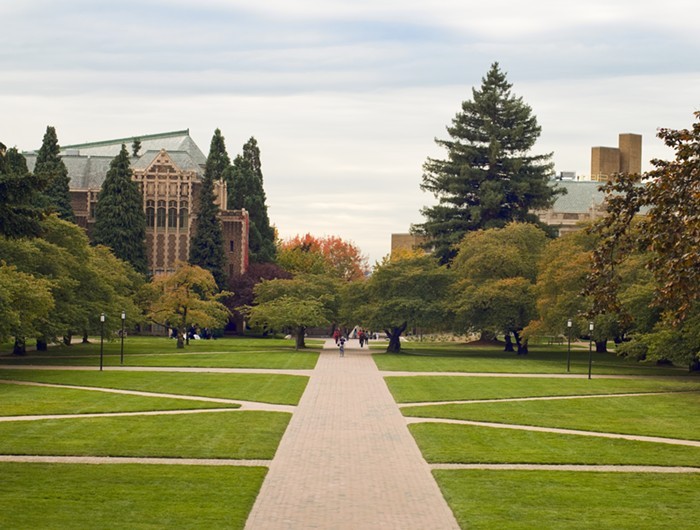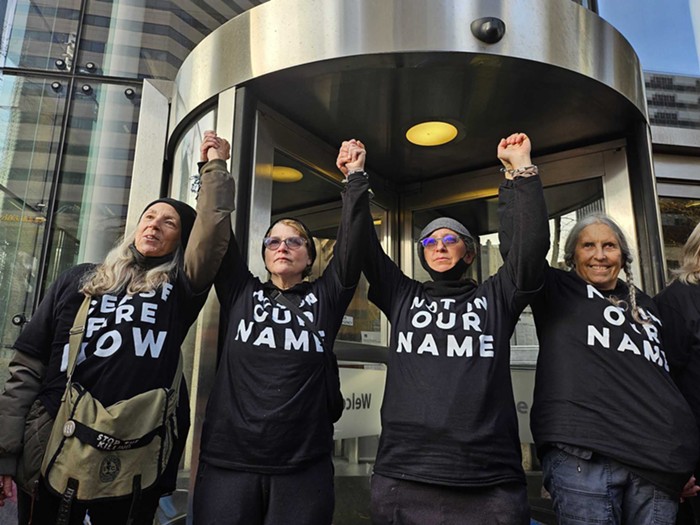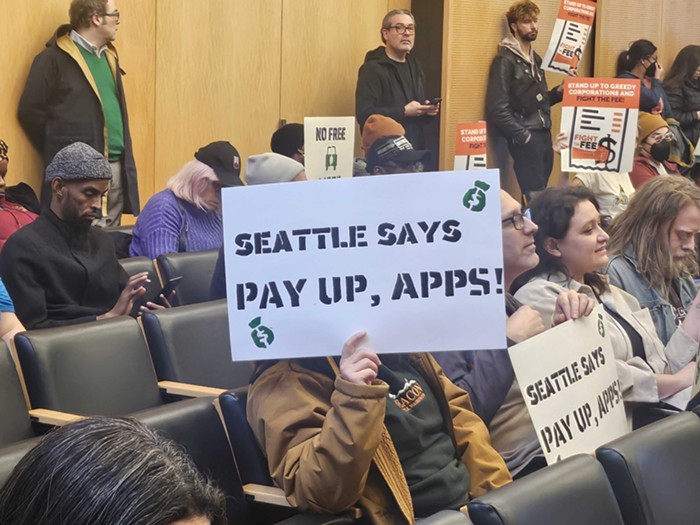The group that represents part of the neighborhood around the Pike/Pine corridor, POWHAT (Pine–Olive Way–Howell Area Triangle neighborhood association), had a meeting last week that turned momentarily ugly when a resident laid into a developer who was in attendance. The angry POWHAT member accused the developer of being in cahoots with architects who designed a monolithic proposed development on East Pine Street between Summit and Belmont avenues, where seven small bars, like the Bus Stop, and retail businesses, like Winner's Circle, currently stand.
Neighborhood residents—30 folks showed up to the meeting, held at the Capitol Hill Presbyterian Church behind Seattle Central Community College— are (understandably) nervous about the development. It includes a six-story, block-long structure with tiny Juliet balconies, several different colors of siding, and almost no green or open space. Indeed, the developers' plans require multiple exemptions from city rules, including green-building and open-space requirements. Many seem skeptical of all developers—also understandable, given the incompatibility of many recent Capitol Hill projects with the surrounding neighborhood.
It was somewhat ironic, then, that the best suggestions came not from activists but from the suddenly besieged developer—Liz Dunn, whose firm, Dunn + Hobbes, redeveloped the Piston and Ring building (where Osteria La Spiga is located) on 12th Avenue and developed the ultramodern 12th Ave Marketplace Lofts on 12th Avenue and East Union Street. She also helped convince Walgreens to partner with the Capitol Hill Housing Improvement Program to build multifamily housing on top of the Walgreens at Broadway and East Pine Street, instead of a one-story structure with a parking lot in front.
Dunn told POWHAT members bluntly, "The whole [development] has to pencil out. They've paid a fortune for that land. That deal is done." Instead of complaining about the fact that a block-long project is going in, Dunn said, residents should use the departures from city requirements the developer is requesting as leverage to get some of the changes they want in the short term, and work to change the land-use policies that allow such developments in the long term.
Not everyone appreciated Dunn's candid suggestions. One POWHAT member, Dennis Saxman, tore into Dunn, accusing her of being "well-connected" with the site's architects, Weber + Thompson. "I think we ought to be clear about what's going on here," Saxman said. "What I hear you saying is that this deal is done and there's no point complaining."
After POWHAT member Jennifer Power had restored order, Dunn, who's not working on the Weber + Thompson project, suggested that Capitol Hill activists push for a conservation district, which would allow the neighborhood to restrict certain types of signage but would be less restrictive (and easier to obtain) than historic-district designation. "When you eliminate a lot of signage you eliminate a lot of chain stores, because [bright plastic underlit signs are] their corporate signage," Dunn said.
Contacted after the meeting, Dunn said she had intended to suggest a more effective course of action, not shut residents down. "I probably should have explained myself a bit better, but my point was just that by the time you're looking at a project, that horse is out of the barn," Dunn said. "I wasn't trying to be discouraging or tell them not to fight this project—absolutely, they should fight it—but if they don't work on the underlying policy issues, they won't get anywhere." Saxman, also contacted after the meeting, countered that the project was not "properly characterized [by Dunn] in the past tense or as completed. No ground has been broken yet, and... there remain major and serious design issues."
Ironically, however, many of the solutions Dunn advocates are ones neighborhood activists like Saxman could probably get behind. In addition to creating a conservation district, Dunn supports allowing property owners to sell their right to build up to six stories to other developers through a process called a transfer of development rights, making smaller infill projects more feasible.
That doesn't satisfy Saxman, who says Dunn's aesthetic "is not informed to any great degree by any of the existing city and neighborhood design guidelines." But Dunn says new architecture should complement, rather than "fit in with," the buildings already there. "Design that 'fits into' the neighborhood—no one can ever figure out what that means," Dunn said at the meeting. "This design actually got worse—it now looks like every other box on Capitol Hill. That's the danger when you give developers feedback about wanting to fit in—you just end up with pabulum." ![]()


















